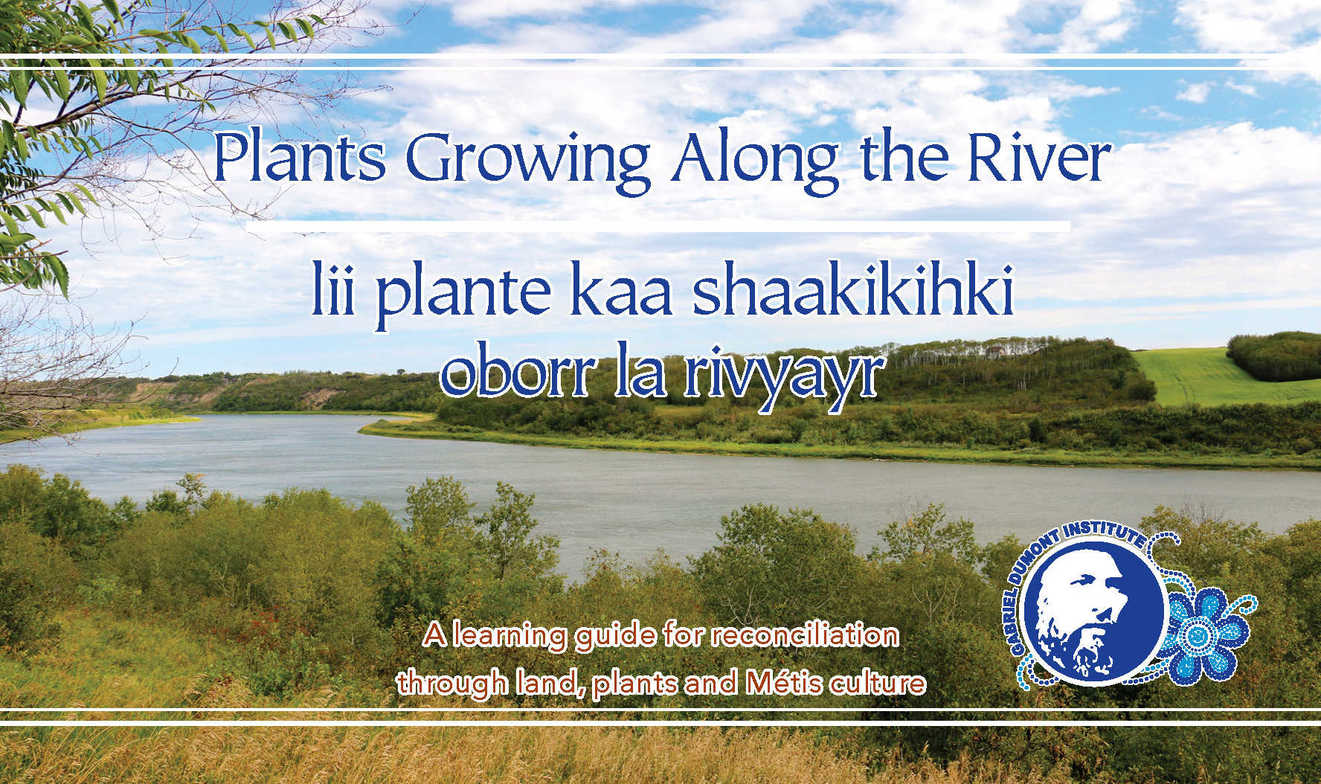As Part of our current BHC Gallery Exhibition, Plants Growing Along the River, there is a unique plant guide on display. You can pick up a copy during your next visit to BHC and etransfer $20 according to the information on the back of the book, or you can order a copy from Turning the Tide at the link provided above.
This guide is about the Métis relationship to plants and the places where they grow, sharing 23 plants that are found at and near Batoche, a Métis community by the South Saskatchewan River.
Inherent in Métis lifeways is landbased environmental conservation. The Métis worldview, expressed through the Michif language and sustained by close community relationships, is one of respect for all living things and their place in the world.
Traditional Métis communities around Batoche on the South Saskatchewan River, and in other similar landscapes, thrived while making only a small environmental footprint and were guided by laws and practices that protected the land and all the things on it, including the plants. This spiritual concept includes both the animate and inanimate, the entirety of all things, as our relatives.
With resourcefulness being a common and necessary trait among Métis families, the Métis used and appreciated the plants found in their local environment. Sustaining all life on the land, these plants provide medicines, food, tools, beauty, and recreation.
This plant guide is intended to help us understand the ways in which the Métis traditionally relate to the natural world and the interaction between plants, memory, place, and language.
Reconnecting with this worldview is an act of reconciliation. It is a response to the Truth and Reconciliation Commission’s Principles of Reconciliation. Principle Eight tells us that “supporting Aboriginal peoples’ cultural revitalization and integrating Indigenous knowledge systems, oral histories, laws, protocols, and connections to the land into the reconciliation process are essential.”

